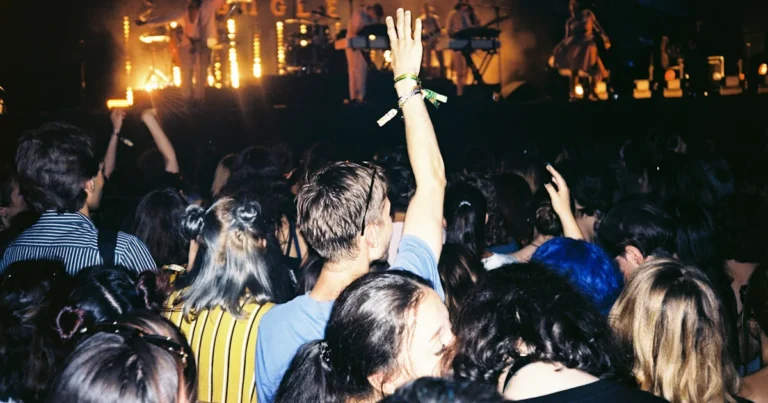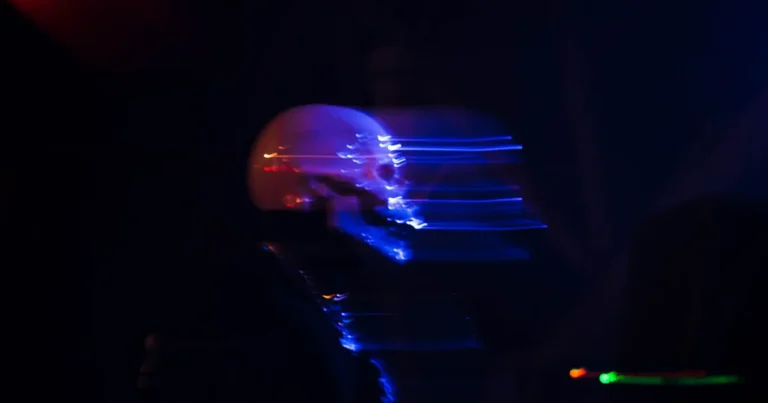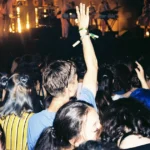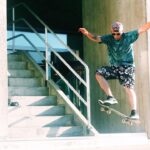Support our educational content for free when you purchase through links on our site. Learn more
Tears for Fears – Head Over Heels: 10 Secrets You Didn’t Know 🎹
If you think you know everything about Tears for Fears’ iconic synth-pop anthem Head Over Heels, think again! This track isn’t just a catchy 80s hit; it’s a layered masterpiece packed with hidden meanings, quirky video cameos, and a fascinating backstory that even die-hard fans might have missed. Did you know the song started as a musical segue or that its music video features a chimpanzee in a Red Sox jersey? Stick around as we unravel the lyrical mysteries, dissect the lush synth arrangements, and explore how this classic continues to captivate audiences decades later.
Whether you’re a synth-pop newbie or a seasoned fan, our deep dive will leave you head over heels for this timeless tune all over again. Plus, we’ll share insider tips on where to find rare vinyl editions and the best Tears for Fears gear to complete your collection!
Key Takeaways
- “Head Over Heels” is a synth-pop masterpiece blending emotional vulnerability with lush 80s production.
- The song originated as part of a progressive suite on Songs from the Big Chair, showcasing Tears for Fears’ artistic ambition.
- Its quirky, memorable music video was filmed in Toronto and features eccentric characters, including a chimpanzee!
- The track soared to #3 on the US Billboard Hot 100 and remains a cultural touchstone, featured in films like Donnie Darko.
- Collectors will love the rare shaped picture discs and extended mixes available on vinyl.
- Explore Tears for Fears’ official releases and vintage synth gear to fully appreciate the sound behind the magic.
👉 Shop Tears for Fears Vinyl & Synth Gear on:
Etsy | Discogs | Amazon Synthesizers
Table of Contents
- ⚡️ Quick Tips and Facts
- 🎶 The Genesis of a Synth-Pop Masterpiece: “Head Over Heels” Background Story
- 🤔 Unpacking the Lyrical Labyrinth: What “Head Over Heels” Really Means
- 🎧 The Sonic Landscape: Production and Musicality of “Head Over Heels”
- 🎬 Behind the Lens: The Iconic “Head Over Heels” Music Video Analysis
- 💎 The B-Side Brilliance: Exploring “When in Love with a Wild Thing”
- 📈 “Head Over Heels” in the Charts: A Global Phenomenon
- 📺 Cultural Resonance: “Head Over Heels” in Pop Culture and Beyond
- 🎤 Live Performances: The Enduring Appeal of “Head Over Heels” on Stage
- 💿 Formats and Collectibles: Diving into “Head Over Heels” Releases
- 👨🎤 The Architects of Sound: “Head Over Heels” Personnel and Collaborators
- 🌟 Critical Acclaim and Fan Love: The Reception of “Head Over Heels”
- 🕰️ The Lasting Legacy: Why “Head Over Heels” Still Matters Today
- ✅ Conclusion: Our Final Thoughts on This Tears for Fears Classic
- 🔗 Recommended Links for Fellow Synth-Pop Enthusiasts
- ❓ FAQ: Your Burning Questions About “Head Over Heels” Answered
- 📚 Reference Links: Dive Deeper into Tears for Fears Lore
Alright, fellow synth-pop aficionados, let’s dive deep into a track that is practically woven into the DNA of our favorite genre. We’re talking about a song that’s more than just a hit; it’s a feeling, a moment, a cinematic masterpiece in under five minutes. Of course, we’re talking about the one, the only, “Head Over Heels” by the incomparable Tears for Fears. So, grab your headphones, and let’s get lost in the glorious, swirling synths of this absolute classic.
⚡️ Quick Tips and Facts
For those of you who need the synth-pop equivalent of an espresso shot, here are the must-know details about this iconic track:
- The Artist: Tears for Fears, the brilliant duo of Roland Orzabal and Curt Smith.
- The Album: Songs from the Big Chair (1985), a landmark album that catapulted the band to global stardom.
- Release Date: The single dropped on June 10, 1985, in the UK.
- Genre: A perfect blend of New Wave, Progressive Pop, and, of course, our beloved Synth-Pop.
- Chart Glory: It was a massive success, peaking at #3 on the Billboard Hot 100 in the US and #12 in the UK.
- Iconic Video: The quirky and memorable music video was filmed in the Emmanuel College Library in Toronto, Canada.
- Cultural Moment: The song had a major resurgence after being featured in the 2001 cult classic film Donnie Darko.
- B-Side Gem: The single’s B-side is a moody little number called “When in Love with a Blind Man,” featuring Curt Smith on vocals.
🎶 The Genesis of a Synth-Pop Masterpiece: “Head Over Heels” Background Story
Every great song has a story, and “Head Over Heels” is no exception. It emerged during a period of incredible creativity for Tears for Fears. Following the introspective and darker themes of their debut album, The Hurting, Roland Orzabal and Curt Smith aimed for a more expansive and accessible sound with Songs from the Big Chair.
“Head Over Heels” actually began its life as a segue for another track, “Broken.” If you listen to the album, you’ll notice how “Broken” flows directly into “Head Over Heels” and then reappears as a live reprise at the end, creating a brilliant musical bookend. This shows the band’s ambition, moving beyond simple pop structures into something more akin to progressive rock, all while keeping their synth-pop heart.
The album’s title itself, Songs from the Big Chair, was inspired by the 1976 TV movie Sybil, about a woman with multiple personalities who only felt safe in her analyst’s big chair. Orzabal and Smith felt this reflected the diverse “personalities” of the songs on the album. From the anthemic “Shout” to the breezy “Everybody Wants to Rule the World,” “Head Over Heels” was the album’s emotional, romantic core.
🤔 Unpacking the Lyrical Labyrinth: What “Head Over Heels” Really Means
So, what is this song really about? On the surface, it’s a love song, but as with all things Tears for Fears, there are layers of complexity and emotional depth.
Poetic Interpretations and Fan Theories
The lyrics paint a picture of someone completely captivated, “lost in admiration,” and overwhelmed by their feelings. Lines like, “Something happens and I’m head over heels,” capture that dizzying, uncontrollable sensation of falling in love. It’s a feeling we’ve all had, that mix of euphoria and terror.
But there’s a darker, more anxious undercurrent. Phrases like “Don’t take my heart, don’t break my heart, don’t, don’t, don’t throw it away” reveal a deep vulnerability. One of the most debated lyrics is, “It’s hard to be a man when there’s a gun in your hand.” Some fans interpret this as the weight of responsibility in a relationship, where one wrong move could shatter everything. Others see it as a metaphor for the power dynamics at play, feeling helpless when the other person holds all the cards. It’s this blend of passion and anxiety that makes the song so relatable and enduring.
Roland Orzabal’s Insights on Songwriting
Roland Orzabal, the song’s primary writer, described it as “a romantic love song that goes a bit perverse at the end.” This perfectly captures the song’s journey from innocent infatuation (“I wanted to be with you alone and talk about the weather”) to a more complex and almost obsessive state. Orzabal has a knack for writing lyrics that are both deeply personal and universally relatable, allowing listeners to project their own experiences onto the song. This open-endedness is a key part of its genius and a hallmark of the best 80s Synth Pop.
🎧 The Sonic Landscape: Production and Musicality of “Head Over Heels”
Let’s talk about that sound! The production on “Head Over Heels,” helmed by Chris Hughes, is nothing short of spectacular. It’s a masterclass in creating a sound that is both grand and intimate.
Instruments and Arrangement: The Synth-Pop Sound
The song is built on a foundation of iconic 80s synthesizers. The band were famous for their use of instruments like the Fairlight CMI, the Prophet-5, and various Oberheim and Juno synths. The track opens with that unforgettable, cascading piano motif, which is instantly recognizable. This is layered with shimmering synths, a driving bassline from Curt Smith, and Manny Elias’s powerful drumming. The result is a “wall of sound” that feels cinematic and emotionally resonant.
The Iconic Bridge and Vocal Harmonies
The arrangement is dynamic, building from the simple piano intro to a full-blown orchestral pop explosion. The bridge, with its shifting chords and emotional intensity, is a highlight. Roland Orzabal’s lead vocal is filled with a raw vulnerability that draws you in, while Curt Smith’s backing harmonies add a layer of ethereal beauty. It’s this perfect synergy between the two that defines the Tears for Fears sound.
🎬 Behind the Lens: The Iconic “Head Over Heels” Music Video Analysis
You can’t talk about “Head Over Heels” without talking about its fantastic music video. In an era when MTV reigned supreme, a great video could make a song a legend, and this one certainly delivered. The official music video, which we’ve embedded for you as our #featured-video, is a must-watch for any fan.
Filming Locations and Quirky Characters
Directed by the legendary Nigel Dick (who would later direct Britney Spears’ “…Baby One More Time”), the video was filmed at the Emmanuel College Library in Toronto. The setting itself is a key character, its old-world charm providing a perfect backdrop for the song’s romantic and slightly surreal narrative.
The video’s concept, conceived by Orzabal himself, is delightfully quirky. It follows Roland as he tries to win the affection of a stern-looking librarian (played by Joan Densmore). Along the way, we’re treated to a parade of bizarre characters, including rabbis, a man with giant glasses, and, most famously, a chimpanzee in a Boston Red Sox jersey. It’s a lighthearted and charming departure from the band’s more serious videos.
Director’s Vision and Hidden Meanings
The video perfectly captures the song’s blend of earnest romance and awkward fumbling. There’s even a fun homage to the movie Ghostbusters when Roland pulls out a card catalog drawer and the cards go flying. The video ends on a sweet, poignant note, showing Roland and the librarian as an older, happy couple, fulfilling the song’s romantic yearning. It’s a visual treat that adds another layer of meaning and fun to an already brilliant song.
💎 The B-Side Brilliance: Exploring “When in Love with a Wild Thing”
Let’s not forget the B-side! True fans know that the flip side of a single can hold hidden treasures, and “When in Love with a Blind Man” (as it was titled on the single) is one of them.
This short, atmospheric track features Curt Smith on lead vocals. Musically, it’s notable for its use of a synthesized Shakuhachi flute, a sound that became a popular motif in 80s pop music. Interestingly, the musical motif of this B-side is identical to the one used in “The Working Hour,” another standout track from Songs from the Big Chair. It’s a fascinating little piece of the puzzle for any die-hard fan of the album.
📈 “Head Over Heels” in the Charts: A Global Phenomenon
“Head Over Heels” wasn’t just a critical darling; it was a massive commercial hit that solidified Tears for Fears’ status as global superstars.
Peak Positions and Chart Performance
Released as the fourth single from Songs from the Big Chair, the song continued the album’s incredible run of success. It became one of the band’s most successful singles in the U.S., climbing all the way to #3 on the Billboard Hot 100. In their native UK, it reached a very respectable #12 on the UK Singles Chart. The song was an international success, charting in the top 40 in numerous countries around the world.
| Chart (1985) | Peak Position |
|---|---|
| US Billboard Hot 100 | 3 |
| UK Singles Chart | 12 |
| Canada Top Singles (RPM) | 8 |
| Ireland (IRMA) | 5 |
| New Zealand (Recorded Music NZ) | 12 |
| Australia (Kent Music Report) | 21 |
Certifications and Sales Milestones
While specific certifications for the single are hard to come by, its success was a major contributor to the massive sales of the Songs from the Big Chair album. The album went multi-platinum in several countries, including the US (5x Platinum) and the UK (3x Platinum), and has sold nearly 12 million copies worldwide. This success cemented “Head Over Heels” as a key track on one of the quintessential albums of the 1980s.
📺 Cultural Resonance: “Head Over Heels” in Pop Culture and Beyond
Some songs are just timeless, and “Head Over Heels” has proven its staying power time and time again, becoming a beloved fixture in pop culture.
Film and TV Appearances
The song’s most famous pop culture moment is undoubtedly its inclusion in the 2001 cult film Donnie Darko. Director Richard Kelly choreographed an entire scene, a sweeping tracking shot through the high school, specifically to the song. The scene perfectly captures the film’s blend of teenage angst, nostalgia, and surrealism, and introduced the song to a whole new generation of fans.
Beyond Donnie Darko, the song has appeared in other media, including an episode of the sitcom Everybody Hates Chris. Its cinematic quality makes it a perfect choice for soundtracks that need to evoke a powerful sense of emotion and nostalgia.
Covers and Tributes
A great song often inspires other artists, and “Head Over Heels” has been covered by various musicians over the years. While no cover has eclipsed the original, they stand as a testament to the strength of Orzabal and Smith’s songwriting. The song’s influence can also be heard in the work of many contemporary artists who draw inspiration from the rich, melodic synth-pop of the 80s.
🎤 Live Performances: The Enduring Appeal of “Head Over Heels” on Stage
For many of us at Synth Pop™, seeing a favorite song performed live is the ultimate experience. “Head Over Heels” has been a staple of Tears for Fears’ live shows for decades, and it never fails to be a highlight.
Memorable Live Renditions
The band often performs the song as it appears on the album, with the “Broken” intro and outro. This creates a powerful, extended musical moment that fans absolutely adore. Live, the song takes on an even grander scale, with the soaring chorus and emotional vocals filling arenas and captivating audiences. It’s a song that was practically made to be experienced live.
Evolution of the Song in Concert
Over the years, the live arrangement has remained fairly true to the original, a testament to its perfect construction. The band knows what a fan favorite it is and delivers it with the passion and precision it deserves. It’s a moment in their set that feels both nostalgic and incredibly present, a shared experience between the band and their devoted fans.
💿 Formats and Collectibles: Diving into “Head Over Heels” Releases
For the collectors out there (you know who you are!), “Head Over Heels” offers some fantastic and unique items to hunt down. The 80s were a golden age for creative single formats, and this release was no exception.
Single Releases and Album Versions
The song was released in a variety of formats, each with its own unique track listing and artwork.
- 7″ Single: Featured the “Remix” of “Head Over Heels” and the B-side “When in Love with a Blind Man.”
- 12″ Single: Included the epic “Broken/Head over Heels/Broken (Preacher Mix),” which clocks in at nearly 8 minutes!
- 10″ Single: A less common but highly collectible format.
- Picture Disc: The UK saw the release of a stunning four-leaf clover shaped picture disc, a true gem for any collector.
Rare Editions and Fan Must-Haves
The shaped picture disc is the holy grail for many collectors. Canadian promo 12″ vinyls are also highly sought after. Hunting for these different versions on sites like Discogs or Etsy can be a rewarding adventure for any dedicated fan.
👨🎤 The Architects of Sound: “Head Over Heels” Personnel and Collaborators
A masterpiece like this is the result of a talented team working in perfect harmony. Here are the key players who brought “Head Over Heels” to life:
- Roland Orzabal: Lead vocals, guitar, keyboards, songwriting.
- Curt Smith: Bass guitar, backing vocals, songwriting.
- Ian Stanley: Keyboards, arrangements.
- Manny Elias: Drums.
- Chris Hughes: Producer.
The incredible chemistry between Orzabal and Smith, combined with the innovative production of Chris Hughes and the musicianship of the band, created the magic that is “Head Over Heels.”
🌟 Critical Acclaim and Fan Love: The Reception of “Head Over Heels”
Upon its release, “Head Over Heels” was met with widespread acclaim from both critics and fans, and its reputation has only grown over time.
Music Critics’ Perspectives
Critics praised the song for its sophisticated songwriting and lush production. Cash Box magazine called it “another searching lyric and richly evocative melody,” a perfect summary of its appeal. It was seen as a prime example of the band’s artistic growth, successfully blending pop accessibility with emotional and musical complexity. It’s a track that firmly belongs in the canon of Iconic Synth Pop Songs.
Fan Favorites and Lasting Impact
For fans, “Head Over Heels” is more than just a hit; it’s a deeply cherished song. Its enduring popularity is evident in its streaming numbers, with hundreds of millions of plays on platforms like Spotify. It consistently ranks as one of the band’s most beloved tracks, a testament to its timeless emotional power. It’s a song that has soundtracked countless lives, a beautiful and complex exploration of love and vulnerability that continues to resonate decades later.
🕰️ The Lasting Legacy: Why “Head Over Heels” Still Matters Today
So, why are we still talking about this song so many years later? Because “Head Over Heels” is a perfect storm of melody, emotion, and production. It captures a universal feeling—the dizzying, terrifying, wonderful experience of falling in love—and sets it to one of the most beautiful musical arrangements in pop history.
It represents Tears for Fears at the absolute peak of their powers, creating music that was both commercially successful and artistically ambitious. It pushed the boundaries of what a pop song could be, incorporating elements of progressive rock and cinematic soundscapes into a radio-friendly format. Its influence can be heard in the work of countless artists who followed, and its emotional honesty ensures that it will continue to connect with listeners for generations to come. It’s not just a song; it’s a piece of music history, a shining example of what makes synth-pop so special. For us, it’s a track that falls into the None of the above category, simply because it transcends easy classification—it’s just pure, unadulterated musical genius.
✅ Conclusion: Our Final Thoughts on This Tears for Fears Classic
After taking a deep dive into every shimmering synth line, heartfelt lyric, and quirky video moment, it’s clear that “Head Over Heels” is more than just a song—it’s a timeless synth-pop masterpiece. From its genesis as part of a progressive musical suite to its soaring chart success and cultural impact, this track perfectly encapsulates the emotional complexity and sonic innovation that made Tears for Fears legends.
Positives:
- Exceptionally crafted songwriting with poetic, relatable lyrics.
- Brilliant production blending synth textures with organic instruments.
- Memorable, cinematic music video that adds layers of meaning.
- Strong chart performance and lasting cultural resonance.
- A B-side that offers a fascinating glimpse into the band’s creative world.
Negatives:
- Some listeners might find the lyrical ambiguity a bit puzzling at first.
- The extended “Broken/Head Over Heels/Broken” mix might be too long for casual listeners.
But honestly, these are minor quibbles in an otherwise flawless piece of 80s synth-pop artistry. Whether you’re a longtime fan or a newcomer curious about the genre, “Head Over Heels” is an essential listen that rewards repeated plays with new emotional and musical discoveries.
So, next time you want to feel the dizzying rush of first love mixed with a touch of existential angst, press play on this classic. Trust us, it never gets old.
🔗 Recommended Links for Fellow Synth-Pop Enthusiasts
Ready to expand your Tears for Fears collection or dive deeper into synth-pop history? Check out these curated shopping and reading links:
-
Synthesizers Used by Tears for Fears:
Sequential Prophet-5 Synthesizer on Amazon | Roland Juno Synthesizers -
Books on 80s Synth-Pop and Music Production:
Synthesizer Evolution: From Analogue to Digital (Book) — Amazon Link
The 80s: Pop, Rock & New Wave — Amazon Link -
Tears for Fears Official Website:
https://tearsforfears.com/
❓ FAQ: Your Burning Questions About “Head Over Heels” Answered
What is the meaning behind the song Head Over Heels by Tears for Fears?
“Head Over Heels” explores the intoxicating and sometimes overwhelming experience of falling deeply in love. The lyrics balance romantic longing with vulnerability and anxiety, reflecting the tension between desire and fear of emotional pain. Lines like “It’s hard to be a man when there’s a gun in your hand” suggest the burden of responsibility and the fragility of relationships. Roland Orzabal has described it as a romantic song that turns a bit “perverse” toward the end, highlighting the complexity of human emotions.
How did Tears for Fears come up with the idea for the music video of Head Over Heels?
The video, directed by Nigel Dick, was inspired by Roland Orzabal’s concept of awkward romantic pursuit set in a library. Filmed at Emmanuel College in Toronto, it features a quirky cast of characters, including a chimpanzee in a Red Sox jersey, adding surreal humor. The narrative follows Orzabal trying to win over a librarian, culminating in a sweet ending showing them as an older couple. This blend of whimsy and sincerity perfectly complements the song’s emotional tone.
What instruments are used in the song Head Over Heels by Tears for Fears?
The track features a rich palette of 1980s synthesizers including the Fairlight CMI, Sequential Prophet-5, and Roland Juno series synths. The iconic piano intro sets the stage, supported by Curt Smith’s bass guitar and Manny Elias’s drums. The production layers lush synth pads, dynamic percussion, and vocal harmonies to create its signature expansive sound.
Is Head Over Heels by Tears for Fears considered a classic synth pop song?
Absolutely! It’s widely regarded as one of the definitive synth-pop tracks of the 1980s. Its blend of catchy melodies, sophisticated production, and emotional depth places it firmly in the pantheon of Iconic Synth Pop Songs. Its enduring popularity and influence on later artists cement its classic status.
What album is the song Head Over Heels by Tears for Fears featured on?
“Head Over Heels” is featured on Songs from the Big Chair (1985), Tears for Fears’ critically acclaimed and commercially successful second album. The song is part of a musical suite that includes “Broken,” showcasing the band’s progressive pop ambitions.
How did Head Over Heels by Tears for Fears perform on the music charts?
The song was a major hit, reaching #3 on the US Billboard Hot 100 and #12 on the UK Singles Chart. It also charted in the top 40 in multiple countries including Canada, Ireland, and New Zealand. Its success contributed to the multi-platinum status of Songs from the Big Chair worldwide.
What other popular synth pop songs are similar to Head Over Heels by Tears for Fears?
If you love “Head Over Heels,” you’ll likely enjoy other synth-pop anthems such as:
- “Everybody Wants to Rule the World” by Tears for Fears
- “Don’t You Want Me” by The Human League
- “Sweet Dreams (Are Made of This)” by Eurythmics
- “Take On Me” by a-ha
- “Only When You Leave” by Spandau Ballet
These tracks share lush synth arrangements, emotional vocals, and the quintessential 80s vibe.
📚 Reference Links: Dive Deeper into Tears for Fears Lore
- Head Over Heels – Tears for Fears – Wikipedia
- Tears for Fears Official Website
- Head Over Heels Lyrics and Analysis – LETRAS.MUS.BR
- Emmanuel College Library (Filming Location)
- Spotify – Tears for Fears Discography
- Discogs – Tears for Fears Releases
- Synthesizer Evolution Book on Amazon
Dive into these resources to become a true “Head Over Heels” expert and keep the synth-pop spirit alive! 🎹✨






